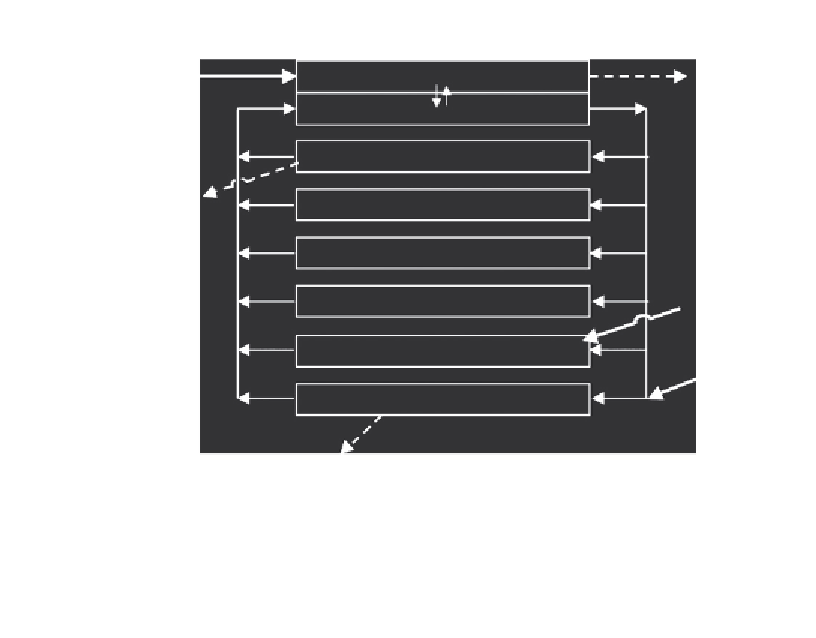Biology Reference
In-Depth Information
Inhaled dose
Exhaled
Alveolar space
Lung blood
Kidney
Excreted
Poorly perfused tissues
Fat
Dermal
dose
Rapidly perfused tissues
Skin
Oral
dose
Liver
Metabolized
Figure 6.11
Schematic representation of a physiologically based pharmacokinetic model. This model
contains descriptions of exposure by the inhalation, oral, and dermal routes and elimination by exha-
lation, excretion, and metabolism.
Table 6.3
Some Existing PBPK Models for Pesticides from Various Chemical Classes
Pesticide
References
Dieldrin
Leung and Paustenbach (1988)
Kepone (chlordecone)
el-Masri et al. (1995, 1996)
;
Yang et al. (1995a,b)
Lindane (hexachlorocyclohexane)
DeJongh and Blaauboer (1997)
Hexachlorobenzene
Freeman et al. (1989); Roth et al. (1993)
Diisopropylfluorophosphate
Gearhart et al. (1994)
Dichlorobenzene
Hissink et al. (1997)
2,4-Dichlorophenoxyacetic acid
Kim et al. (1994, 1995, 1996)
Captan
Fisher et al. (1992); Woollen (1993)
Chlorpyrifos
Timchalk et al. (2002)
the compartments in which these processes occur. PBPK models require three types
of parameters as inputs: physiological, physicochemical, and biochemical. Physiological
parameters (e.g., pulmonary ventilation rate, cardiac output, blood flow to tissues, and
tissue volumes) for humans and several laboratory animal species are available in the
literature (
Arms and Travis, 1988
). Physiological parameters, which are not dependent
on the chemical under study, are assumed to be constant for a given species. However,
if it is known that physiological parameters change with time or a particular exposure
scenario, those changes can be easily incorporated into PBPK models. Physicochemical


Search WWH ::

Custom Search